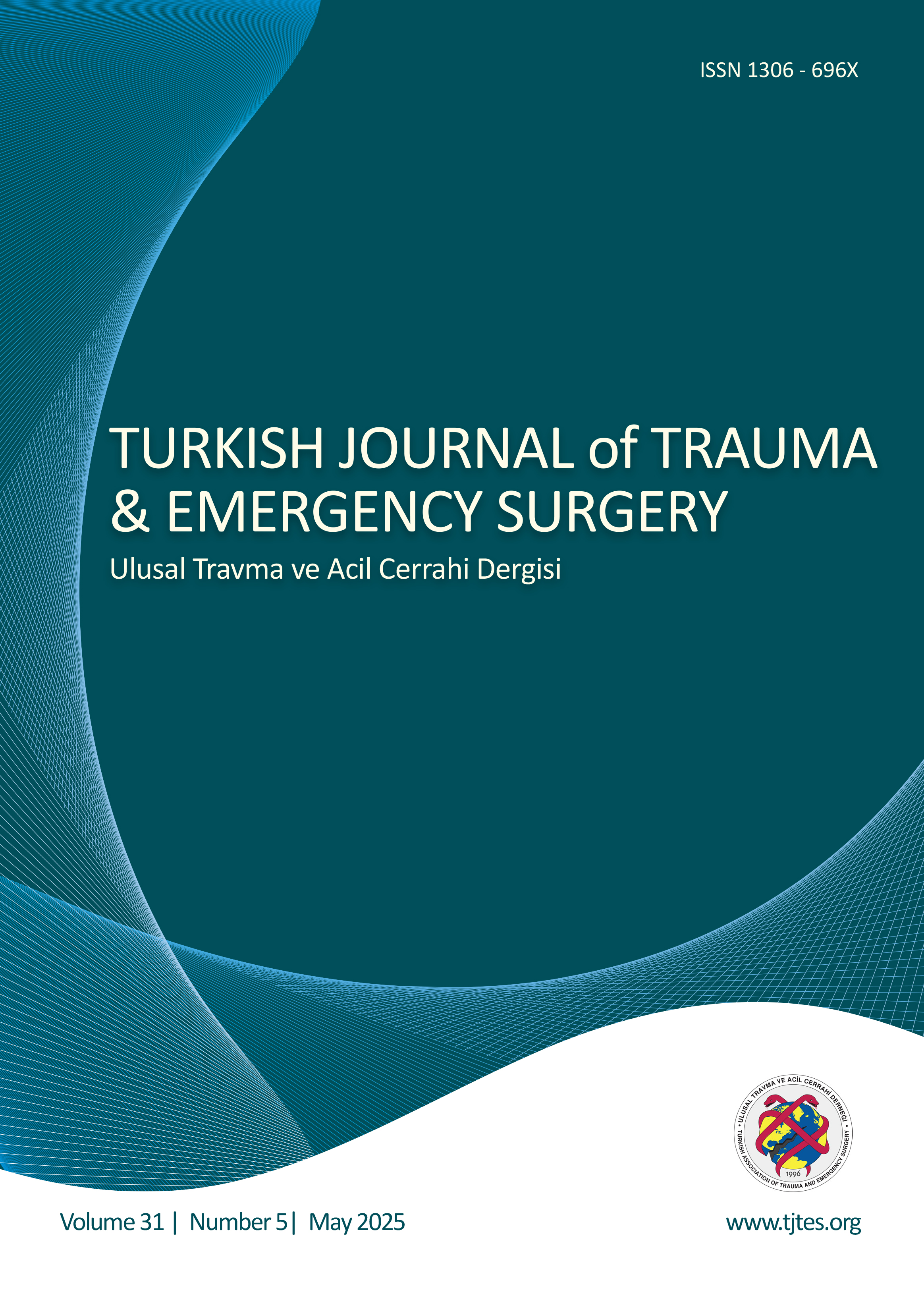Hızlı Arama
İnstabil trokanterik kırık tedavisinde kullanılan üç farklı intramedüller çivinin klinik sonuçlarının karşılaştırılması
Sinan Zehir1, Ercan Şahin2, Regayip Zehir31Hitit Üniversitesi Tıp Fakültesi, Ortopedi Ve Travmatoloji Anabilim Dalı, Çorum2Bülent Ecevit Üniversitesi Tıp Fakültesi, Ortopedi Ve Travmatoloji Anabilim Dalı, Zonguldak
3Çarşamba Devlet Hastanesi, Kardiyoloji Kliniği, Samsun
AMAÇ: İntertrokanterik kırıkların tedavisinde kullanılan üç farklı intramedüller çivileme yöntemiyle ilişkili sonuçların değerlendirilmesi amaçlandı.
GEREÇ VE YÖNTEM: Bu geriye dönük kohort calismasina A2 ve A3 tip stabil olmayan trokanterik kırık nedeniyle opere edilen hastalar dahil edildi. Kullanılan tekniğe göre hastalar üç gruba ayrıldı: Talon distal sabit çivi/lag screw (n=78, ortalama yaş: 78.5±6.6), PFNA çivi (n=96, ortalama yaş: 77.2±6.8) ve İnterTan çivisi (n=102, ortalama yas: 76.8±6.7). Son kontrolde Harris kalça skoru kaydedildi, sağkalım telefon görüşmesi ve vatandaşlık bilgi bankası kayıtlarından elde edildi.
BULGULAR: Grupların temel özellikleri benzerdi. İnterTan grubunda ameliyat süresi, floroskopi zamanı ve kan kaybı anlamlı olarak fazlaydı. PFNA grubunda sekiz hastada cut-out oluştu. Hastane içi mortalite %3.2 idi (dokuz hasta). Hastanede yatış süresi ve ameliyat sonrası tip-apex mesafesi gruplar arasında farklı değildi. İyileşme süresi ve Harris kalça skoru gruplar arasında benzerdi. Bir yıllık sağ kalım Talon distal sabit çivi/lag screw grubunda %83.1±4.5, PFNA grubunda %84.0±3.8 ve İnterTan grubunda 84.4±3.7 bulundu (p=0.33).
TARTIŞMA: Talon distal sabit çivi/lag screw yöntemi daha az cut-out oranıyla PFNA tekniğinden ve daha kısa ameliyat süresiyle InterTan yönteminden daha iyi olarak bulunmuştur.
Comparison of clinical outcomes with three different intramedullary nailing devices in the treatment of unstable trochanteric fractures
Sinan Zehir1, Ercan Şahin2, Regayip Zehir31Department Of Orthopedics And Traumatology, Hitit University Faculty Of Medicine, Çorum2Department Of Orthopedics And Traumatology, Bülent Ecevit University Faculty Of Medicine, Zonguldak
3Department Of Cardiology, Carsamba State Hospital, Samsun
BACKGROUND: The aim of this study was toreport our experience regarding the use of three different methods for intramedullary nailing in the treatment of intertrochanteric fractures.
METHODS: Patients with A2 and A3 type fractures operated on for unstable trochanteric fractures were included into this retrospective cohort study. Patients were divided into three groups based on the technique used; Talon distal fix nail/lag screw (n=78; mean age, 78.5±6.6), PFNA nail (n=96; mean age, 77.2±6.8) or InterTan nails (n=102; mean age, 76.8±6.7). Harris hip scores were recorded at the last outpatient visit and survival information was obtained by phone interview and civil registry database.
RESULTS: Baseline characteristics were similar among groups. Operation time, fluoroscopy time and blood loss were significantly higher in InterTan group. Screw cut-out occurred in eight patients in PFNA group. In-hospital mortality occurred in nine (3.2%) patients. Length of hospital stay and postoperative tip-apex distance was not different among groups. At follow-up, healing time and Harris hip scores were also similar among groups. One-year survival rate was 83.1±4.5% in Talon distal fix nail/lag screw, 84.0±3.8% in PFNA group and 84.4±3.7% in InterTan group (p=0.33).
CONCLUSION: New Talon distal fix nail/lag screw was associated with lower cut-out rates than PFNA and shorter operative times than InterTan. Further study is warranted to clearly establish the potential advantages of Talon distal fix over any other technique described herein.
Makale Dili: İngilizce




